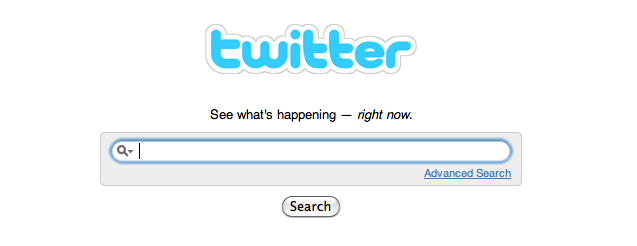Part 2
Building and interacting with your Twitter community
Follow people who are relevant to your content or area of expertise and segment them into lists. Many organizations keep the number of people they follow low to avoid information overload. It is a better practice to follow several people and create targeted lists to categorize their tweets. Lists can be segmented by recurring topic areas on contacts, influential accounts and others with whom the organization would like to develop relationships.
Prepare to grow your following slowly. There will be some users who follow your account on the strength of your brand and others who have to get to know you and your content first.
Know how to use Twitter search
The primary way to search Twitter is the search box on Twitter.com, or the website Search.Twitter.com. The search function will help you find user names, hash tags and important topics being discussed on Twitter.

If you need basic support, Twitter has an active help center, which includes articles on using search effectively and on using Twitter search with multiple search terms and hashtags. Mashable also has a good article on becoming familiar with Twitter search basics.
It’s recommended that each account answer all “Mentions” and “Direct Messages” that are not outright marketing solicitations. “Thank you” is an acceptable response for many messages and others can be handled in a few words.
Your twitter community should be a combination of influential people and leaders, other news organizations, industry experts and “everyday people”—those who follow you to stay informed and who might have unexpected information or perspectives on issues you’re working on.
Twitter’s advanced search option also allow you to search for Twitter users in your area. This can be a good way to build a local following.
You can also use services like listorious.com, wefollow.com and Twibes.com to search for groups of Twitter users who share your media interests and goals.
Using Twitter as a reporting and listening tool
Twitter is an amazing tool to use to monitor news on issues or within a geographic area. With Twitter, you have the ability to monitor issues, find sources and stories and get authentic, community views and attitudes on topics you are covering.
Keep an active search for your name and any keywords and hashtags relevant to your organization or line of work. This is the easiest way to monitor your brand and follow interesting conversations.
Monitor friends and other journalists’ tweets to track important issues of the day and to catch up on news you might have missed.
catch up on news you might have missed.
There are several tactics to use to sharpen your listening skills:
- Follow the right people - and build that list
- Know how to use Twitter search
- Understand how hashtags work and how to create them
Twitter can also be used to crowdsource stories. Asking your followers questions about stories you are working on can reveal new angles and experts you might not have considered. It also makes your audience feel more connected to your work and more likely to read and share it when the story appears.
Useful reporting tools include:
Twitterfall.com: A powerful real-time Twitter search tool that allows you to search for trending topics by locations, keywords and several other options beyond the basic Twitter search.
Twitcam.com: A service that allows users to create a streaming video channel linked to a twitter account. Followers can interact with the channel, which can be a great tool for covering live events, discussions and public meetings.
What’s in Spot.Us Founder David Cohn’s Social Media Toolkit?
David Cohn, @digidave

I created Spot.Us, a journalism crowd-funding website and am plugged in to a number of social networks, including:
Twitter: I love the “river of news” that Twitter creates. It allows for conversation—it keeps things moving forward. It allows me to dip in and out as I want. I tend to limit my personal tweets to maybe one or two a day. For work stuff, I constantly scan Twitter, but sometimes I just have to zen out and realize I’m not going to (or supposed to) read everything.
Facebook: Facebook probably has a bigger ROI [return on investment] for Spot.Us and maybe even for me personally, but I prefer the light user interface of Twitter.
Jing: I LOVE Jing: It allows you to take screencasts — five minutes at a time — for free. Then it automatically uploads the screencasts to screencast.com. This is GREAT for customer service, directing users who aren’t sure how to navigate or use the site, and also great if you want to work with a distributed team, like designers and developers.
Seesmic Desktop: Similar to TweetDeck, I mostly use it if I want to track several conversations at once. Which I do—sometimes.
